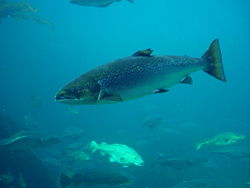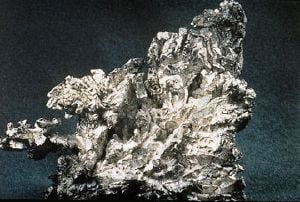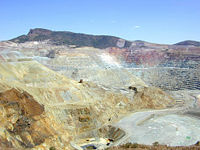Natural resource
Natural resource is any naturally occurring substance or feature of the environment (physical or biological) that, while not created by human effort, can be exploited by humans to satisfy their needs or wants. There are divergent views on whether economic value is a necessary condition for something to be classified as a natural resource, a distinction that can have legal
ramifications (See definition.) Examples of natural resources include fossil fuels (crude oil, coal, etc.), minerals (diamonds, copper, etc.), salmon, and timber. Trees in a park that provide aesthetic beauty can be considered natural resources among those who do not limit the term to the presence of economic product value.
Resources such as fossil fuels and minerals are considered “non-renewable resources” since they are irreversibly depleted as they are extracted for use. Other resources, such as fish and timber, are “renewable resources” and will be replenished if managed well.
Some natural resources, such as oil and natural gas reserves, may be associated with particular properties. Other resources, such as whales, migratory birds or fish, or clean air are not fixed to particular properties. According to economic theory, the private ownership of natural resources tends to produce more efficient extraction and consumption because of the profit motive, which leads to realistic pricing and careful management. On the other hand, when natural resources are not privately owned, there is a greater tendency for their being over-exploited, as individual parties compete for their use. This overuse, sometimes to the point of destruction, has been termed the “tragedy of the commons.” However, in both cases, there is danger of careless use and over-exploitation of the natural resources when individual parties, in their exploitation or use of the natural resources, fail to consider the broader needs of others in society or the needs of future generations.
A well-known is the fact that abundant natural resources, under some defined circumstances, may actually correlate with poor state development, such as seen in the Democratic Republic of Congo or Nigeria. This is known as the ”resource curse.”
Definition
There are two basic conditions for a substance or feature to be classified as a natural resource. First, the resource must exist naturally in the environment; that is, not synthetically produced by human beings, such as in a laboratory or factory. Crude oil, timber, deer, and sailfish fit that requirement, whereas genetically engineered bacteria or computers do not. A naturally occurring commodity typically is classified as a natural resource when it is extracted or purified from its natural state rather than being created. Second, the resource must be able to be exploited by humans to directly satisfy a need or want. Copper, tuna, and air fulfill such a requirement (with air supplying a need, as a condition for life), whereas an infectious parasite or mosquito does not (although the parasite or mosquito may provide an indirect benefit as part of nature, such as part of food chains).
Some authorities hold that for a substance or feature to be classified as a natural resource, it must offer potential or actual economic value, creating wealth. Others do not limit the term to those resources having economic product value, but also include supplying a non-economic value. Resources such as oil, coal, wood, water power, and arable land clearly can be seen as providing potential economic value. These are considered natural resources by all parties. The second, broader concept also includes such features as climate and trees planted in a park. While not considered to have any direct economic value, they do provide important non-economic values. A climate may be seen as part of one’s enjoyment of nature and tourism, while trees in a park provide aesthetic values.
This distinction is reflected in the two divergent definitions of natural resource found in Black’s Law Dictionary (Seventh edition, 1999): (1) “any material from nature having potential economic value or providing for the sustenance of life; and (2) Environmental features that serve a community’s well-being or recreational interests, such as parks.”
It is a distinction that has important legal ramifications. ******
A natural resource industry is one in which the primary activity involves extraction and/or purification of the natural resource, instead of creation of the commodity. Examples of natural resource industries include crude oil extraction and processing, fishing, and forestry. Agriculture is not considered a natural resource industry.
Examples of natural resources
Examples of resources supplied by nature:
- Fossil fuels (petroleum, natural gas, coal)
- Minerals (diamonds, gold, copper, silver)
- Natural vegetation, forests, timber
- Air, wind
- Water, water power
- Sunlight
- Soil, topsoil
- Animals (salmon, whales, deer, etc.)
Note that while soil is itself considered a natural resource, heavily worked agricultural lands, with their input of fertilizer, pesticides, herbicides, and so forth, are often not considered to be natural resources.
Classification
renewable/non-renewable
Credits
This article began as an original work prepared for New World Encyclopedia by Dr. Dwight Smith and is provided to the public according to the terms of the New World Encyclopedia:Creative Commons CC-by-sa 3.0 License (CC-by-sa), which may be used and disseminated with proper attribution. Any changes made to the original text since then create a derivative work which is also CC-by-sa licensed. To cite this article click here for a list of acceptable citing formats.
Note: Some restrictions may apply to use of individual images which are separately licensed.

